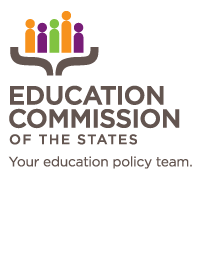This is a guest blog post by Todd Ziebarth, senior vice president, State Advocacy and Support at National Alliance for Public Charter Schools.
As state legislative sessions begin across the country, many bills are expected to be introduced regarding charter public schools. While some of these bills will focus on how to expand the number of high-quality charter school options available, a good number will also likely be geared toward capping charter school growth, cutting charter school funding and re-regulating charter schools. Based upon the trends in charter school policy over the past several years, here are some specific things to watch for in 2017.
* No Law States: In the seven states without charter school laws, will any get bills over the finish line this year? If so, will these bills be as strong as the laws we have seen enacted in the previous “no law” states of Maine, Washington, Alabama, and Mississippi? We are paying particular attention to Kentucky, Nebraska, and West Virginia.
* Facilities Funding: On average, charter school students receive about 70 percent of the dollars that flow to similar students in traditional public schools. The major reason for this gap is charter schools’ lack of access to facilities dollars. Some states have taken notable strides to address this problem over the past couple of years.
- Arizona: In 2016, the legislature created the Public School Credit Enhancement Fund to provide more than $300 million in financing for quality schools, including charter schools.
- Indiana: The legislature passed legislation in 2015 providing $500 per-student allotment to charter schools for facilities and transportation. They also created a low-interest facilities loan program for charter schools to borrow up to $5 million . Both programs are performance based.
- Ohio: In 2015, the state crafted policies to increase charter school funding. They increased the per-pupil funding for charter facilities by $50 per year over two years. and created a $25 million grant program for high-performing charter schools. The legislature also expanded the ability of traditional districts to levy taxes for exemplary charter schools.
* Accountability: As states strengthen accountability for schools and authorizers, will they continue to focus these efforts on results instead of inputs? A few states took positive steps in this direction over the past few years.
- Michigan: In 2016, the legislature passed legislation requiring authorizers to be accredited before approving additional schools in Detroit and prohibited “authorizer hopping” – meaning when low-performing charter schools jump around from one authorizer to another to avoid closure. They also created an A–F accountability system for all public schools in Detroit and created automatic closure requirements for chronically low-performing charter schools across the state.
- Oklahoma: The legislature created a number of new charter school accountability policies in 2015, such as requiring performance-based charter school contracts and creating automatic closure requirements for charter schools performing in the bottom 5 percent. They also created policies around authorizers, such as expanding the number and types of allowed authorizers. For example, all school districts may now become authorizers, community colleges may authorize schools Oklahoma and Tulsa counties, and the state board of education may serve as an authorizer for a limited number of charter schools approved on appeal.
- Wisconsin: In 2015, the legislature passed legislation strengthening authorizer accountability, accountability provisions in charter contracts, and clarifying the duties of authorizers. They also created four new authorizing pathways, allowing these organizations to authorize charter schools in specific regions of the state:
- The University of Wisconsin System in Milwaukee and Madison via a newly created Office of Educational Opportunity (whose director will be appointed by the University of Wisconsin’s president).
- The County Executive of Waukesha County within the county.
- Two tribal colleges in their counties and adjacent counties.
- The Gateway Technical College District Board in its county and adjacent counties.
As states look to enact policy changes in these key areas, they should look to the improvements states have already made as a starting point. At the end of the day, the National Alliance for Public Charter Schools feels that the changes made in these states will lead to more high-quality charter public school options for the students who need them the most.




